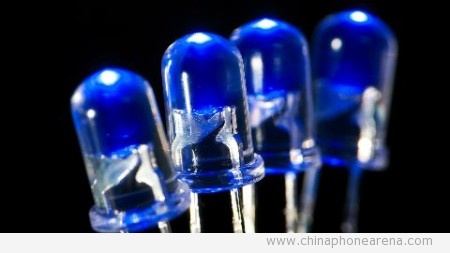Click here for the Google Build Your Own Phone Project Ara article. We apologize for the incorrect link in the newsletter.
CES 2015 will be bright and colorful with the release of many new gadgets, including the introduction of Quantum Dot TVs.
After LED TVs had officially pushed plasma TVs off the top podium for TV tech, they were threatened by the emergence of OLED TVs. However, OLED technology never got to its anticipated height of success due to the significant costs of implementing it.
At this year’s CES, LED TVs are yet again being threatened to be pushed out of the picture by a new technology called Quantum Dot TVs. The implementation is still the same as with LED TVs, wherein the images are processed and broadcast onto LCDs.
LCD vs LED: Their Key Difference
 Standard LCD TVs are backlit with fluorescent lamps, which produce a white light that gets filtered to let through the red, blue, and green lights necessary to broadcast images. However, fluorescent lamps also produce stray colors which manifest as impurities to the images. In order to eliminate these stray colors, heavy filtering is needed. As a drawback, if too much light is filtered, the images produced would have insufficient brightness, thus lessening the quality of image perceived by the audience.
Standard LCD TVs are backlit with fluorescent lamps, which produce a white light that gets filtered to let through the red, blue, and green lights necessary to broadcast images. However, fluorescent lamps also produce stray colors which manifest as impurities to the images. In order to eliminate these stray colors, heavy filtering is needed. As a drawback, if too much light is filtered, the images produced would have insufficient brightness, thus lessening the quality of image perceived by the audience.
A compromise was to use purely blue LEDs coated with yellow phosphor, which effectively produce white light
LED TVs were developed by replacing the backlighting with LEDs. Image quality-wise, the ideal design approach would be to implement pure red, blue, and green LEDs, which of course would end up costing too much in both production value and power consumption. A compromise was to use purely blue LEDs coated with yellow phosphor, which effectively produce white light. These are lined on one or two edges of TVs, and are filtered by the LCD as well. This method has ensured better quality images, by virtue of purer white light, and has attained better efficiency in terms of power consumption and size.
Quantum Dot (QD) Technology
QLED display…adapt the OLED structure but replace the organic component with quantum dot nanocrystals
QD technology was the product of QD Vision company. They had the original goal of developing a QLED display, which was supposed to adapt the OLED structure but replace the organic component with quantum dot nanocrystals. Their target for QLED is still prioritized in their R&D, but the development for QD LCD TVs went faster.
According to QD Vision’s co-founder, Seth Coe-Sullivan, QDs are light emitting semiconductor nanocrystals that can absorb light of one wavelength and convert it to light of any other wavelength. It is said to be capable of producing more distinct reds, blues, and greens than dedicated colored LEDs.
The LCD barely filters any of the light because the colors generated are so pure
QD technology is implemented with blue LEDs. The LED emits its light through a tube lined with red and green QDs. The light produced at the end of the tube appears purely white, which is a combination of the colors from the LED and QDs. The LCD barely filters any of the light because the colors generated are so pure. This, in turn, allows the LCD to broadcast a brighter picture.
Nanosys and 3M’s spin on QD Tech
Placing the QDs too close to the blue LED may shorten their lifespan, due to thermal stress. Nanosys and 3M have developed QD Enhancement Film, wherein the blue LEDs are lined on the TVs edges, and the entire back of the LCD panel is lined with QDs. As a tradeoff with extended lifespan, the film of QDs would make it a costly approach.
QD TVs at CES 2015
It is reported at IEEE Spectrum that Sony has been using QD Vision’s technology, and will be announcing new models at CES. TCL, on the other hand, had already announced their 55-inch QDTV for the China market, and is said to also make an appearance at CES. Naturally, LG wouldn’t want to fall behind to TCL, and it seems they will also be making an announcement on QDTVs but will likely be opting for Nanosys/3M’s tech.


Leave a Reply